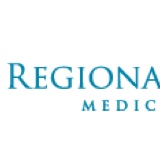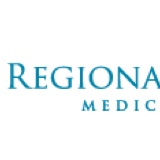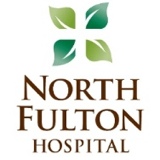Title Page
-
Hospital
-
Department / Area Inspected
-
Department Director
-
Conducted on
-
Prepared by
-
Inspected By
Life Safety
-
Are exit doors and stairwells clear? Main, corridor, and stairwell exits cannot be blocked.
-
Are exit doors clearly marked "exit" and illuminated? Check for burned out bulbs.
-
Do fire doors latch properly? Close fire doors to see if they latch properly and see that there is no gap <1/8 inch in the middle.
-
Are corridors and passageways free of obstruction? The corridor can have mobile items (wheels on them) that are emergency needed items that are in use.
-
Are pull stations or fire extinguishers unobstructed? There must be nothing to obstruct access.
-
Are doors not propped open/held open? Doorstops or homemade held open devices are not allowed while no one is in the area. Tape is not allowed over any corridor doors.
-
Are all materials stored a minimum of 18" from sprinkler head?
-
Are storage rooms and equipment rooms free of clutter and unsafe conditions? Make sure items are not falling down or overstocked.
Safety Management
-
Is area free from evidence of smoking?
-
Are wet floors clearly marked to reduce tripping hazards? When floors are wet, does the staff put out wet floor signage?
-
Are the floors/ hallways in good condition?
-
Are ceiling tiles clean, stain free, and in good condition? Indicate where these bad tiles are located in the comments.
-
Are heavy items stored at low levels or mid levels in storage? Make sure the heavy items are stored at waist level or lower shelves.
-
Are general areas clean and free of clutter?
-
Are compressed gases stored properly? Compressed gases need to be chained to the wall or on a cart secured. Free standing bottles are not allowed.
-
There are no shipping boxes (mailing label on outside of the box) present in this area? An outside box that has gone through the mail system cannot be present, only inner contained boxes are allowed.
Utilities
-
There are not any two prong extension chords in this area? These are the household type extension chords. Remove these immediately.
-
Are telephone chords out of the way?
Haz Mat & Waste
-
Are secondary chemical containers labeled with product name, hazard label and manufacturer? Indicate any chemical that is in a container other than the original container.
-
Are chemicals stored separately from patient care contact or other clean items?
-
Is the Hazardous Chemical Inventory adequate and available to all employees? The hazardous chemical inventory list will be in the SDS book within the department.
-
Are appropriate procedures, instructions, or directions available for obtaining SDS? There should be instructions within the department to access the SDS.
-
There are no items stored under the sink?
Security
-
Is staff's personal items properly secured? Check for purses, billfolds, money, keys, etc. left out for you to take.
-
Are all employees wearing their ID badges in plain view?
-
Are all mechanical, electrical, janitorial, communications rooms locked? Indicate which rooms are not locked.
Medical Equipment
-
Does equipment not have any exposed wires? Check the plug for exposed wires.
-
Does the equipment cleanliness, paint, wiring, and covers appear satisfactory?
EOC Rounds Questions
Safety
-
Explain how to report an injury involving a staff member.
Security
-
Explain your response to a Code Silver.
-
Explain your response to a Code Pink.
Life Safety
-
What does RACE stand for?
-
Where is the nearest fire alarm pull station in your location?
-
Where is your nearest fire extinguisher?
Emergency
-
What is a Code Green?
-
Where are the MedSled Evacuation Sleds located?
Haz Mat and Waste
-
What goes into biohazard red bag waste?
Medical Equipment
-
How do you report a medical equipment problem?
-
Explain information found on the medical equipment sticker.
Utilities
-
If the power in the hospital fails, explain how to locate outlets powered by the emergency generator.













